Rules for growing cauliflower in the open field and in a greenhouse
It is not difficult to master the cultivation of cauliflower in the open field, but your family will be provided with a tasty and healthy product. The main problem that many gardeners face is that a dense, large inflorescence is not obtained. Each culture needs to be approached individually, the correct planting and good care will help the Mediterranean guest to get used to the unusual conditions.
Features of cultivation of cauliflower
Although cauliflower came to our dachas from the warm Mediterranean, it perfectly adapted to the cold climate of the Urals, Siberia, and the Leningrad region. Some gardeners complain that the crop is very capricious and gives poor yields. This happens if you do not know what conditions are necessary for plants, how to properly care for plantings, how to grow seedlings from seeds. Consider some growing secrets and you won't have any problems.
Cauliflower is not adapted to live in conditions of white nights; for its development, it requires a sufficient duration of both light and dark times of the day. In conditions of constant illumination, a dense head is not obtained, the peduncles are stretched and lose their taste. In the northern regions, it is necessary to calculate the sowing time so that forks do not ripen in June and the first half of July. It is impossible to wait for a tasty harvest even with poor watering, when the plants suffer from thirst.
Cauliflower does not require a lot of heat, but it does not like summer too cold. If the temperature does not rise above + 15⁰, the forks will be shallow, poorly developed. The most suitable thermal regime is from + 15⁰ to + 20⁰. In extreme heat, shade the plants, spray them with water. When growing in a greenhouse, remember to ventilate the plantings.
In warm regions, proper care will help you get 2 or even 3 crops per season from seeds. To achieve this result, you need to choose early maturing varieties, for example, "Goat Dereza". The last plantings, most likely, will not have time to mature in the open field. Many forks will need to be grown in a greenhouse or greenhouse with safe cover.
The following varieties give good yields:
- "Early mushroom";
- Movir;
- "Alpha";
- "Skorospelka".
Sowing seeds for seedlings
To get strong plants, you need to provide the seedlings with proper care from the first days. Time your sowing exactly. The seedlings should be replanted after about a month and a half. Check the weather forecast for when the temperature is right in your greenhouse or outdoors and start sowing your seeds. Pour the grains into a cloth bag and keep them in a container of room temperature water for 12 hours.
Pour expanded clay at the bottom of the container for drainage, then fill it with an earthen mixture. You can buy soil for sowing seeds at the store or prepare your own. One of the good lineups:
- garden land - 35%;
- peat - 30%;
- black soil - 30%;
- sand - 5%.
Young seedlings often suffer from black leg. To protect seedlings, cover the seed to a depth of 1 cm, and then cover the entire soil surface with a thin layer of sand. This material will draw excess moisture from the soil, and pathogens of fungal diseases will not affect the plantings. Cover the container with a special lid or plastic wrap and place in a warm place.
First of all, a powerful root system must develop. Immediately after the emergence of seedlings from the seeds, keep the planting at a temperature not higher than + 10⁰.The growth of the aerial part will slow down and the roots will develop well. After about a week, move the containers to a room with a temperature of about + 15⁰. Now you need the sprouts to become strong, not to stretch out. In early spring, plantings may lack light, especially if the windows face north. Turn on a fluorescent lamp above the container and surround it with reflective screens.
How to grow strong seedlings
So the planting of the cauliflower was successful. 10 days after the emergence of seedlings, seedlings must be dived into separate cups. Take deep containers so that both the root and the stem will fit into the ground until the leaves. After the appearance of the third leaf, the seedlings need to be fed with a special fertilizer or dissolved in a bucket of water 15 g of potash and 5 g of ammonium nitrate and water the earth.
The second feeding will be needed after the next leaf appears. From time to time, planting should be sprayed with a weak solution of boric acid from a spray bottle. When the fifth leaf is formed on the seedlings, it is ready to move to the garden bed. Do not overexpose the seedlings indoors, overgrown plants do not tolerate transplanting well, they cannot take root for a long time, they get sick. One can only dream of a good harvest, no care will help the seedling to recover.
It will be a great stress for the plants if they are immediately transferred from a warm room to open ground. A week and a half before transplanting, start taking the containers out into the fresh air. For the first time, keep them outside for several hours in the warmest time, gradually increase the time of "walks". Before planting, do not water the plants for several days, moisten the soil abundantly only on the day of moving to the garden.
Landing in open ground
A rich harvest cannot be obtained without good lighting. Set aside a sunny spot for your cabbage plantation. The weak point of cauliflower is a superficial and poorly developed root system. The most fertile composition should be in the upper layer, no deeper than 40 cm. In autumn, when digging, add organic and mineral fertilizers to the soil, and in case of an acidic reaction, add lime.
The distance in the garden bed and between the rows and between medium-sized plants, for example, the Goat Dereza variety, should be 0.5 m. Cabbage will take up a lot of space, but you can grow lettuce next to it, dill or radish... The depth of the hole should be such that the seedling is buried in the ground until the first leaves. Pour nitrogen and phosphorus fertilizers into each hole, add trace elements, especially boron and magnesium, lightly dust the chemicals with earth and spill well with water. The first days shade the planting from the scorching sun.
Planting cauliflower outdoors will immediately catch the insects' attention. Succulent bushes are a tasty dish for cabbage flies and cruciferous fleas. You can pollinate plantings with ash or tobacco dust to discourage pests. To prevent insects from eating your crop, plant next to cabbage basil, rosemary or garlic.
Advice
To prevent cabbage diseases during spring digging, add for each m2 land 5 g of colloidal sulfur.
Growing cabbage in the garden
Plants need proper care to form dense heads. Moisture is very important, but you cannot overfill the soil: the roots do not tolerate stagnant water. It is better to water the garden through a sprayer, the above-ground part is very fond of fine spray. Be sure to loosen the soil under the plants so that it is saturated with air and excess moisture can evaporate.
Half a month after planting, the plants need to be fed with organic matter. Do not pour fresh manure on the ground, soak it in water for 3 days, and then dilute each liter of infusion in 5 liters of water. After feeding, spud the bushes so that the stem does not stick out of the ground. When the forks begin to tie, re-feed with a complex fertilizer with trace elements.
Advice
If the heads are not tied in any way, chop off the lower leaves, then the plant will use all the forces to form the inflorescence.
If the cabbage has been attacked by pests, insecticides can be used. Chemicals can be used before the heads begin to tie. For prophylaxis, spray the garden with tincture of wormwood, tobacco or burdock every week, such treatment will not bring harm. You can hide them from light to keep the heads white and tasty. Cut off the lower leaves and cover the inflorescence with them. In the shade, bitterness leaves the forks, and they acquire a beautiful white color.
Cauliflower in a greenhouse
To get an early harvest, you can plant seedlings in a greenhouse in early spring. The conditions should be the same as for growing in the open field: temperature about + 15 пол, proper watering, feeding. If the daylight hours are still short, you need to highlight the planting with lamps. In a greenhouse and a greenhouse, the air humidity is usually too high. Ventilate the plants daily to avoid attack by rot or fungal infection.
In the greenhouse, you can also grow seedlings for the second harvest. Seed germination is carried out in a container, and when picking, the seedlings are placed in the ground. Before planting in the garden, the seedlings must be hardened. Open doors and vents for several hours during the day. If heat-loving crops are grown in the same room, they can be protected with covering material or foil during airing.
In autumn, the greenhouse will also need space for cabbage. Dig up unripe plants by the roots and plant them for growing. Make sure that the temperature does not drop below + 5⁰. In case of severe frosts, the plants can be covered with non-woven fabric, foil or mats.
Harvesting and storage of crops
When harvesting, cut the head with a small piece of stem and 4 leaves. Harvests can be refrigerated for up to 50 days. In the cellar, cauliflower will not wilt until 4 months. Divide the forks into small inflorescences to ensure you have fresh heads until next season. Rinse and dry the shoots, remove any rotten areas and store them in a bag in the freezer.
The heads that do not have time to mature can be grown. Dig up the bush by the roots and plant in a greenhouse or greenhouse. If this is not possible, you can put the plants in the cellar and sprinkle the roots with soil. From time to time, the land needs to be watered. The second option: hang the heads of cabbage upside down. With this method, they can increase the weight of the head by 0.5 kg.
The harvest is ripe, and the bushes are still full of strength, the leaves are juicy and healthy. Leave one good shoot on the stem; a new fork may start on it. Do not forget that in this case, too, the plant needs feeding, care and watering. If the head does not have time to ripen before frost, dig up the bush and plant it in a greenhouse, where it will reach the desired size.
Output
Cauliflower has undeservedly gained fame as a capricious and fastidious plant. Growing problems arise for those gardeners who do not know and do not take into account the biological characteristics of the species, do not provide the necessary care. The secrets of good harvests are easy to remember and apply. The culture is especially demanding on lighting: in the spring, seedlings need to be additionally illuminated with lamps, and when heads appear, they need darkness at night.
Plants develop in about 60 days. The yield depends on the variety. For example, "Goat Dereza", if provided with good care, can give up to 10 kg from 1 m2.... You can't plant plants too closely, but to save space, you can plant herbs, spices, salads between the bushes. Such a scheme is convenient for protecting cabbage from pests: many insects cannot tolerate garlic or rosemary. If the heads are not ripe before frost, the bushes can be grown in a greenhouse.
Cauliflower is used to prepare familiar vegetable dishes - soups, stews. You can boil the shoots and bake with cheese or fry with an egg. This low-calorie, but nutritious product is included in many diets and is used to prepare children's meals.Grow and preserve the harvest correctly, and then use your imagination and surprise your guests with an unusually tasty dish.
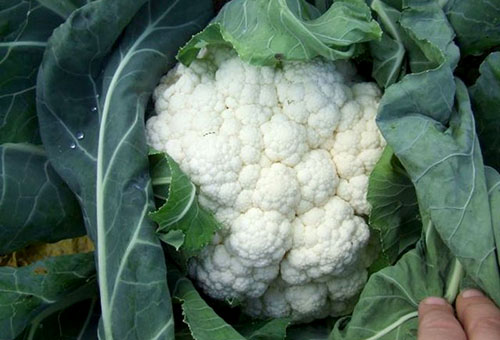

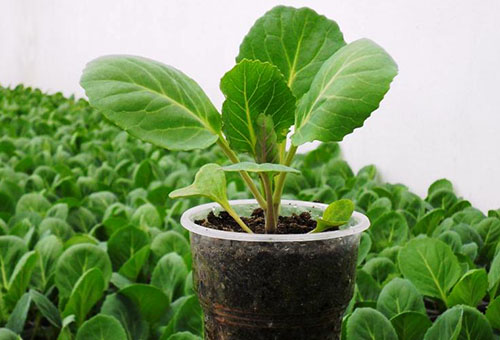
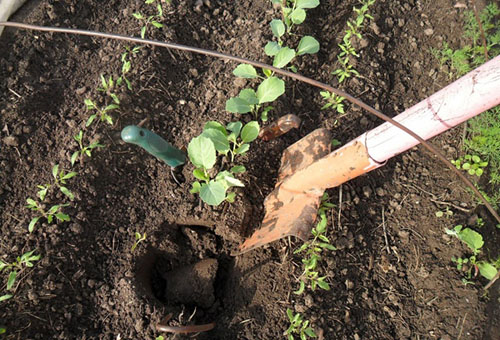
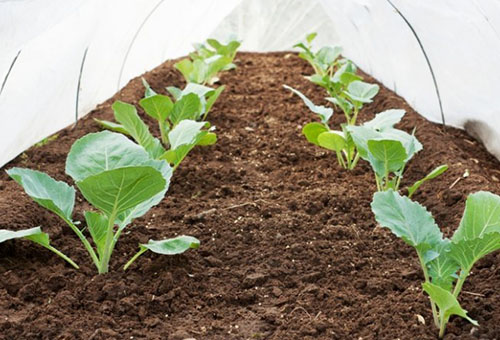
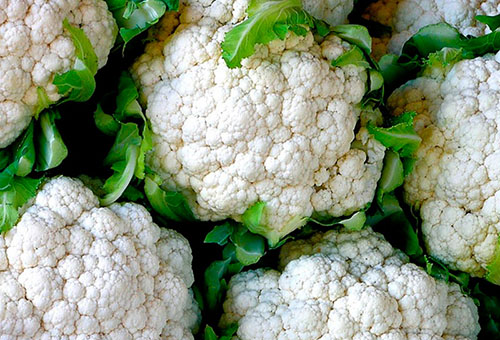
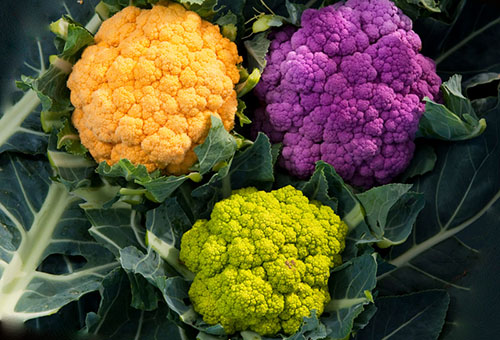
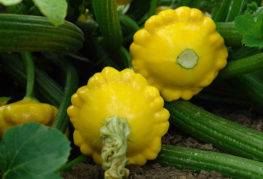

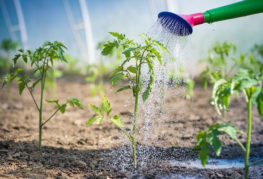
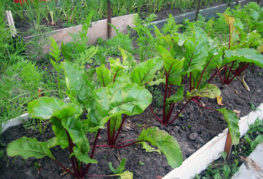
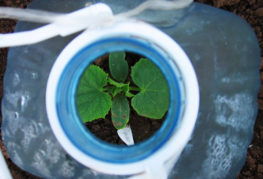
and will be published shortly.